Full Length Top Batten
We have been testing our Snipe mainsail with the full length top batten along with longer #2 and #3 battens. I sailed a 30 boat regatta in San Diego with a mast-head camera to capture the flying shapes of the mainsail with the new batten arrangement. The goal for the new batten arrangement, and heavier sail cloth is to provide a longer lasting, more durable sail inventory for Snipe sailors, and I think the Snipe Class is on target with this upgrade. The camera system is set up to take photographs one after another with a few seconds of delay. This provides me with tons of data to evaluate flying shapes. I have a great look at the dynamics of the sails flying shapes as the wind/trim/tuning may change throughout the day. During our recent event where I used the mainsail with the new batten arrangement, we had all of the boats tied up to the dock prior to racing with our sails hoisted. My mainsail luffed a lot less while tied to the dock compared to the other, standard mainsails. Less luffing is good news for helping the sail cloth to last longer, be it tied to the dock or on the starting line!
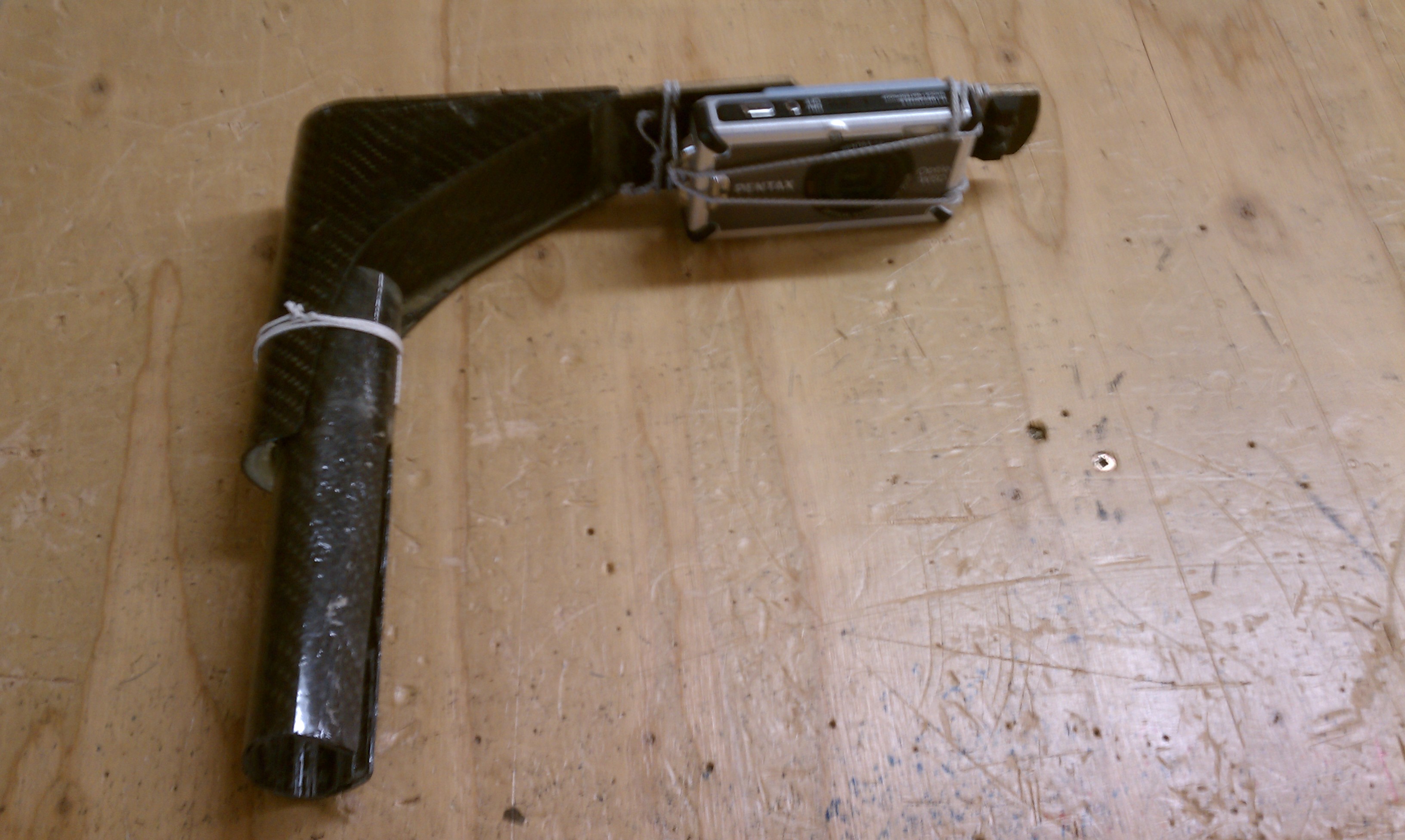
We have been testing our Snipe mainsail with the full length top batten along with longer #2 and #3 battens. I sailed a 30 boat regatta in San Diego with a mast-head camera to capture the flying shapes of the mainsail with the new batten arrangement. The goal for the new batten arrangement, and heavier sail cloth is to provide a longer lasting, more durable sail inventory for Snipe sailors, and I think the Snipe Class is on target with this upgrade.
The camera system is set up to take photographs one after another with a few seconds of delay. This provides me with tons of data to evaluate flying shapes. I have a great look at the dynamics of the sails flying shapes as the wind/trim/tuning may change throughout the day.
During our recent event where I used the mainsail with the new batten arrangement, we had all of the boats tied up to the dock prior to racing with our sails hoisted. My mainsail luffed a lot less while tied to the dock compared to the other, standard mainsails. Less luffing is good news for helping the sail cloth to last longer, be it tied to the dock or on the starting line!
Aesthetically, this was one of the best looking and smoothest Snipe mainsails I have ever seen! Snipe mainsails are very full, and the full length top batten provides better support to the top of the sail, allowing for a smoother shape.
In the light to moderate conditions (and super flat water) I really liked the dynamic of the full length top batten. Since the batten is in compression loading, easing the mainsheet (in a lull) results in the leech opening more compared to the normal batten configuration. In the flat water, I could keep trimming the mainsheet harder and harder as the wind increased. The harder I trimmed, the higher we could point. Then as the puff would leave, an ease of the mainsheet saw a quicker and more active opening of the upper leech to help me accelerate in the lull (or at least help keep me from slowing down so much in the lull!). The full length batten will help open the upper leech in chop as well…making it easier to keep the boat going through the waves.
Here are a few mast-head photos demonstrating the flying shape differences from simply easing the mainsheet tension in a lull (or for an expected set of waves). First is a photo of the sail at maximum trim for the light wind conditions of 6-8 knots and super-flat water.

As our puff leaves, I eased the mainsheet 85mm which allowed the leech to twist open, while still keeping the boom on centerline. I was able to measure the distance eased (85mm) through the use of the mast head camera…it was easy to see how much my sheet hand moved in the ease. The photo of the eased mainsheet was taken only a few seconds after the first photo.

Using our Advanced Sail Analyzer software, we can get a really good look at the differences in flying shapes from these two photos comparing mainsheet tension differences. The software is used to analyze the flying shapes of the photos and yields Max Camber, Draft position, Twist, Entry and Exit angles, Forward and Aft shaping. The software also creates a 3D IGES file for each photograph to provide a 3D overlay comparison view from any angle.
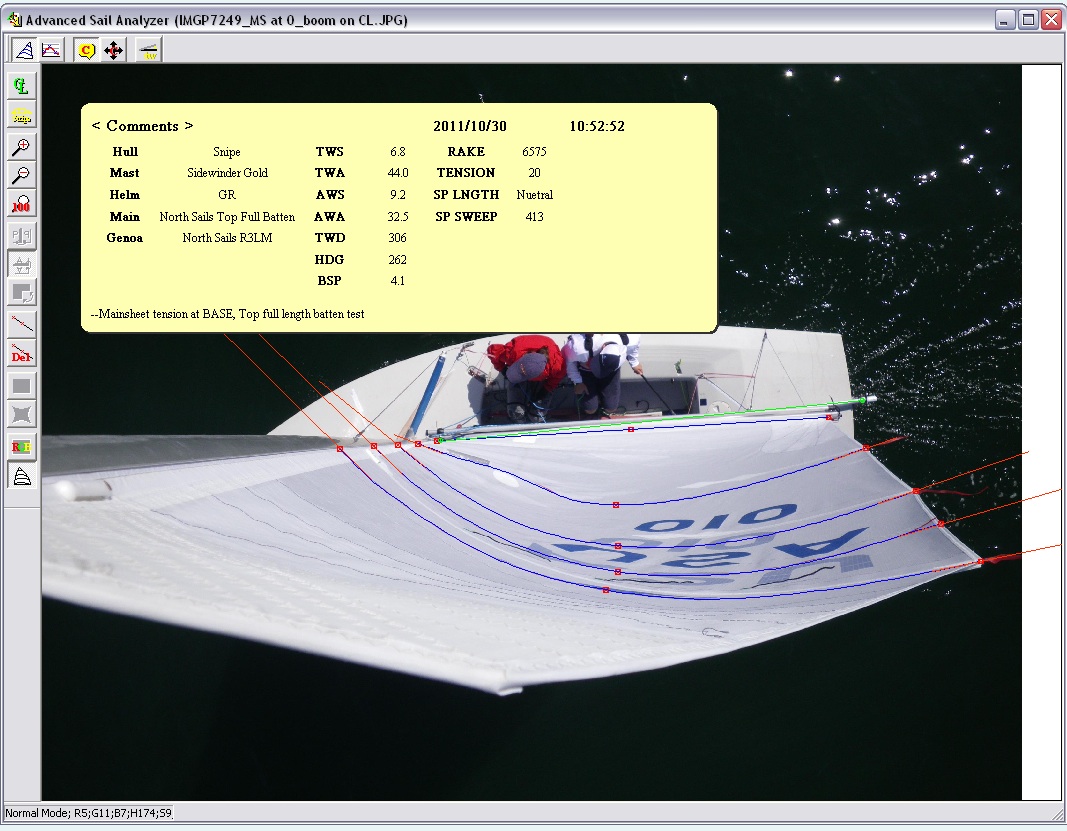
Below are several different 3D overlay views showing the flying shape differences between these two mainsail photos. The photograph with the tighter mainsheet is shown in RED. The second photograph with the 85mm mainsheet ease is shown in BLUE
The first view is the “Team’s view” looking up from below the boom, as you would while sailing. The tight mainsheet trimshows much less twist. This would definitely not be a sustainable trim in lots of chop, but for a puff of 8 knots and super-flat water, my wife and I were pointing really well!
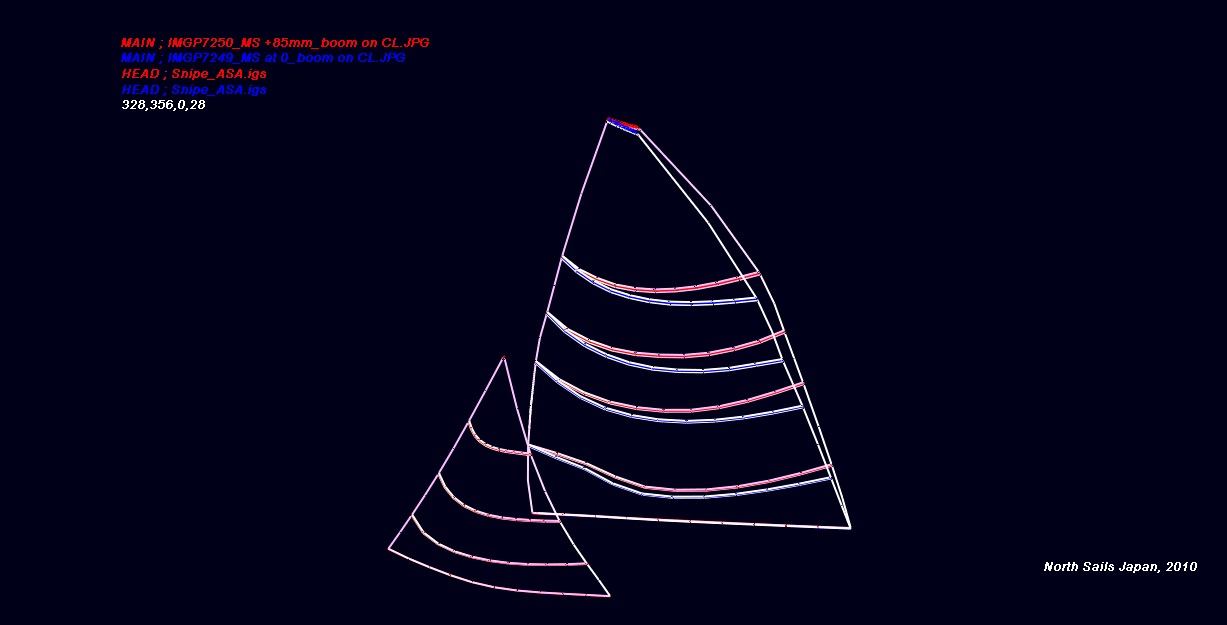
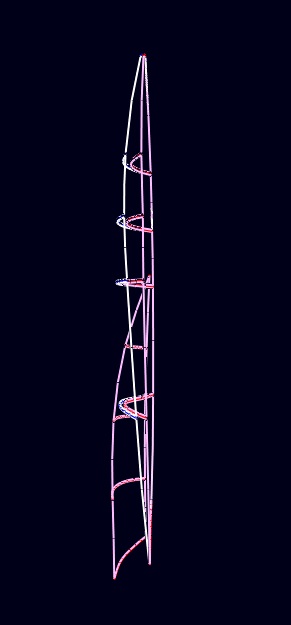
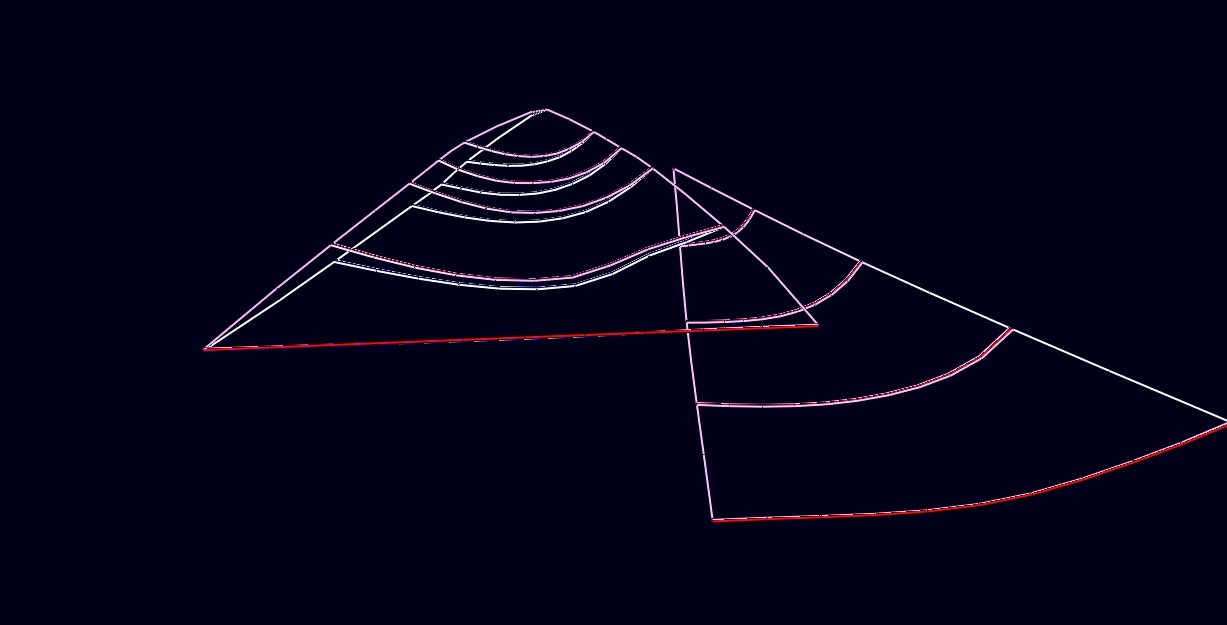
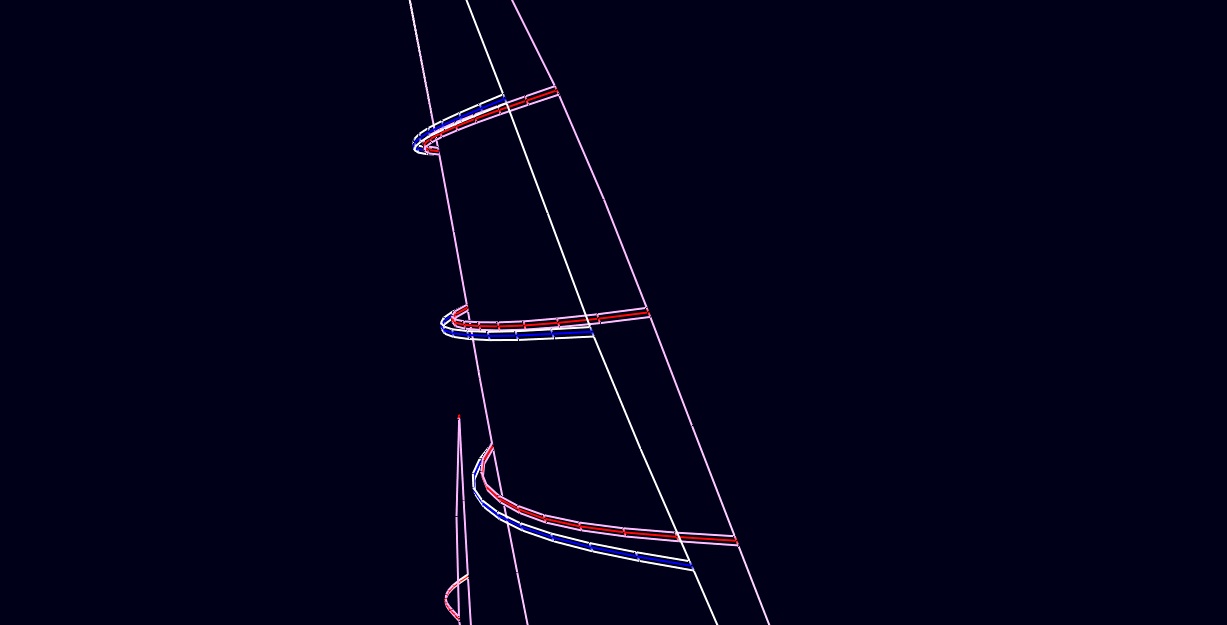
Downwind, I thought we might have an issue with the top full-length batten not gybing properly in light wind conditions. The batten I used was soft enough to ‘pop’ through with no problem. The last thing I wanted to happen was to sail a downind run with an inverted top batten! Similar to upwind, the full-length batten seems to help keep the mainsail open. This will really help in light air, and in chop as the mainsail will be a bit more stabilized when the boat/rig bouces around in bumpy conditions. We (as sailors) will probably have to reconsider our boom vang tension downwind in different conditions as the dynamics of the sail will certainly change.
Another thing to consider is how the boat accelerates out of tacks and gybes. During a roll gybe, the apparent wind moves such that some boom vang tension is needed to provide some power as the boat is flattened. With no vang tension, the sail will simply twist open as you flatten, and you will not generate as much power as possible. With no tension in the leech, you also risk having the top full-length batten not gybing correctly. So a little vang tension just prior to gybing (in light conditions) will help with your gybes.
This will be a great step forward for the Snipe Class. The sails will last longer as the longer battens configuration provides more support for the sailcloth. The full length top batten will also make “gear changing” a little easier for sailors compared to the current arrangement.
Leave a reply
Your email address will not be published. Your comment will be revised by the site if needed.

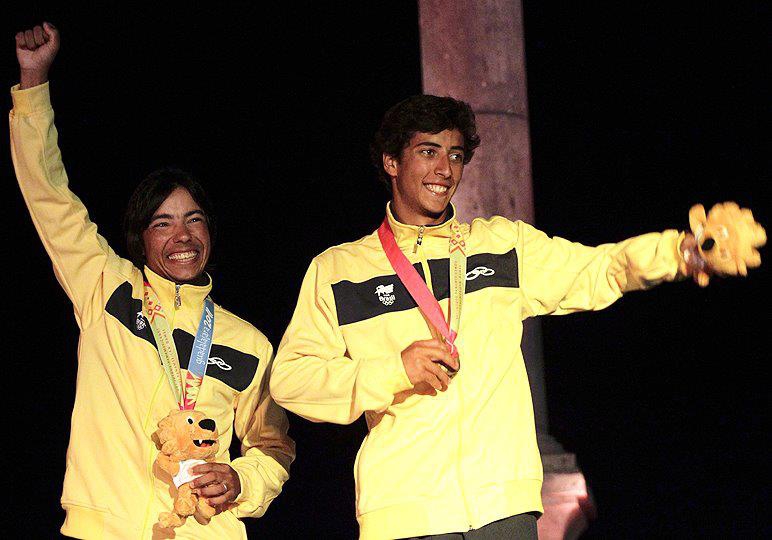
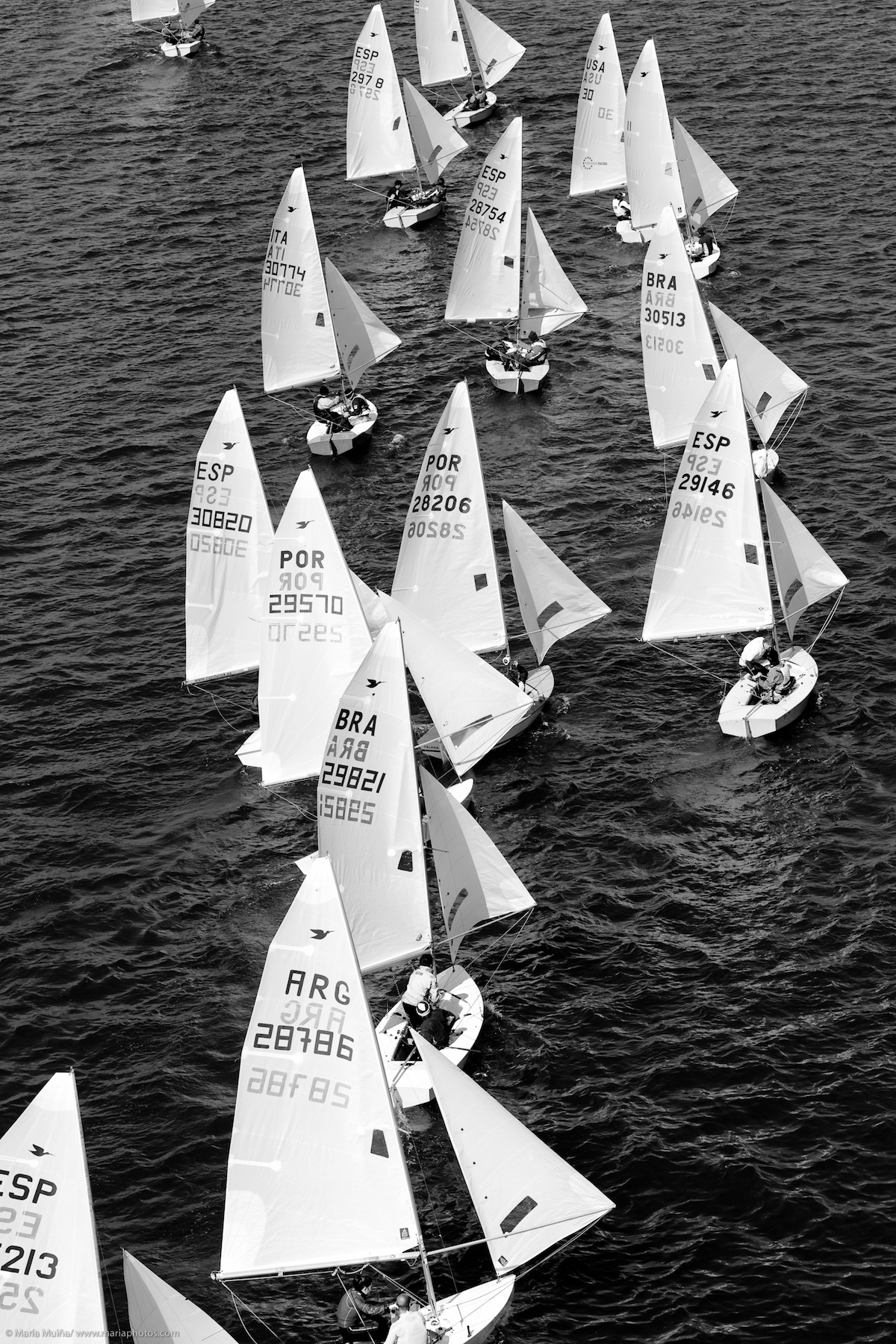
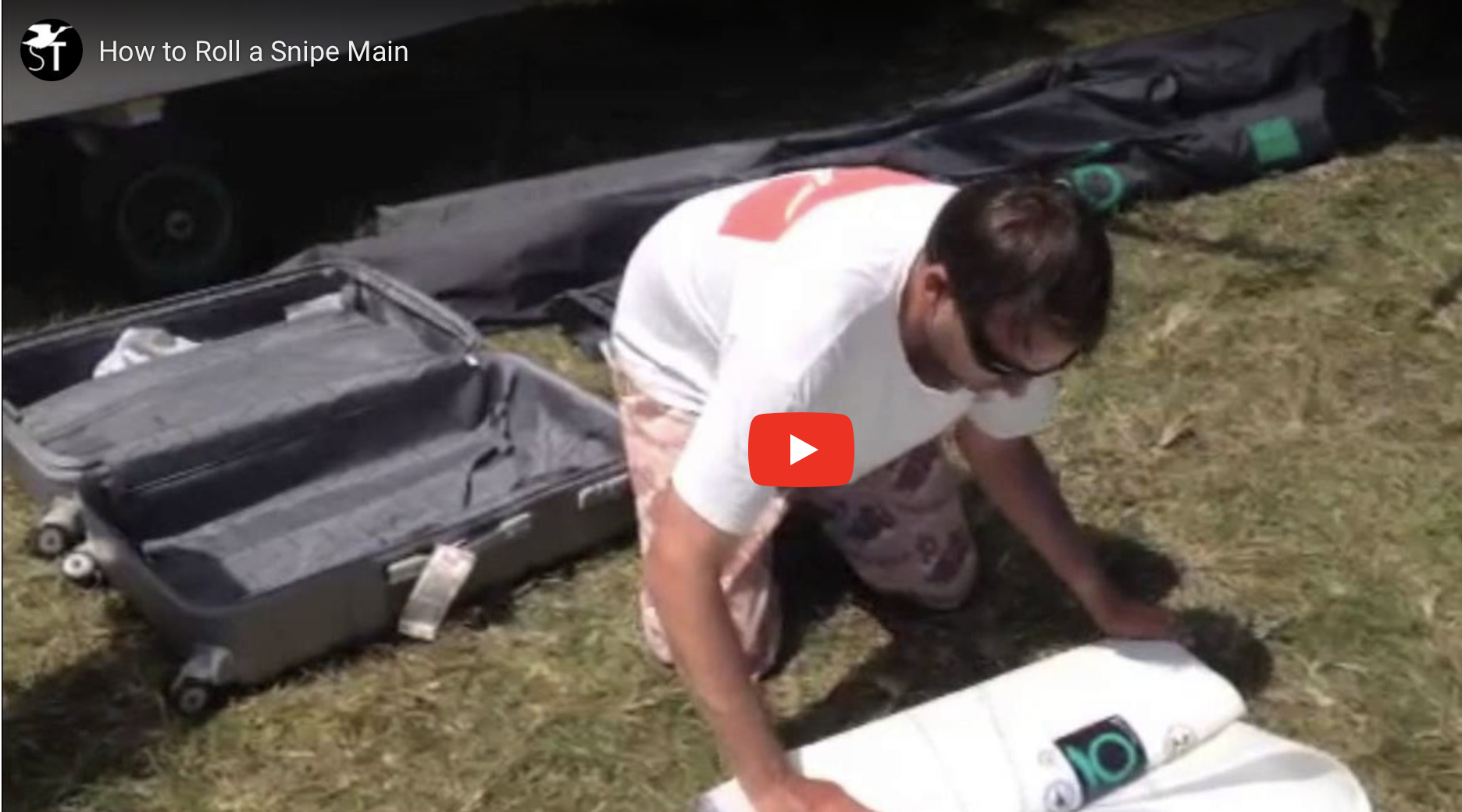
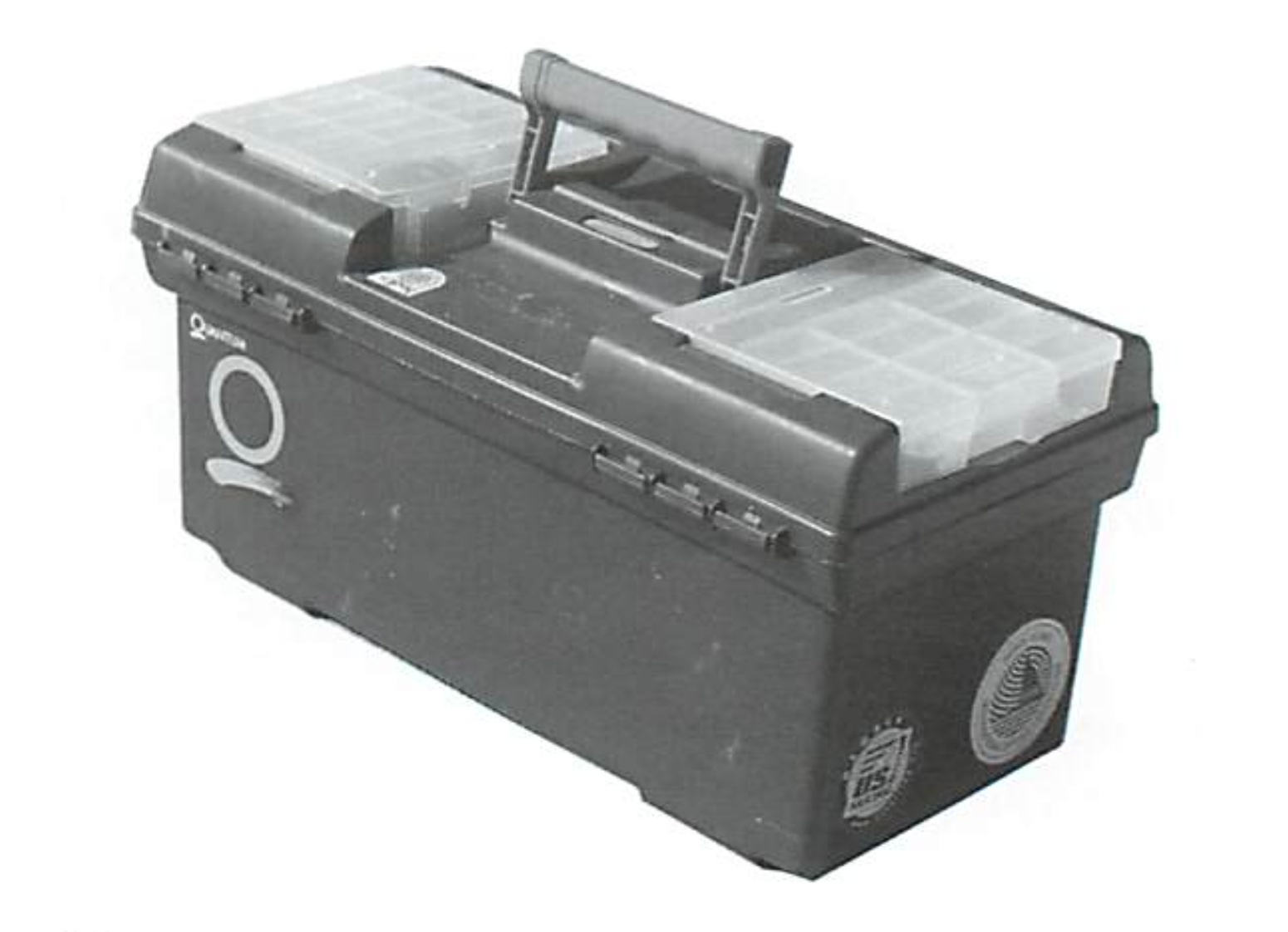

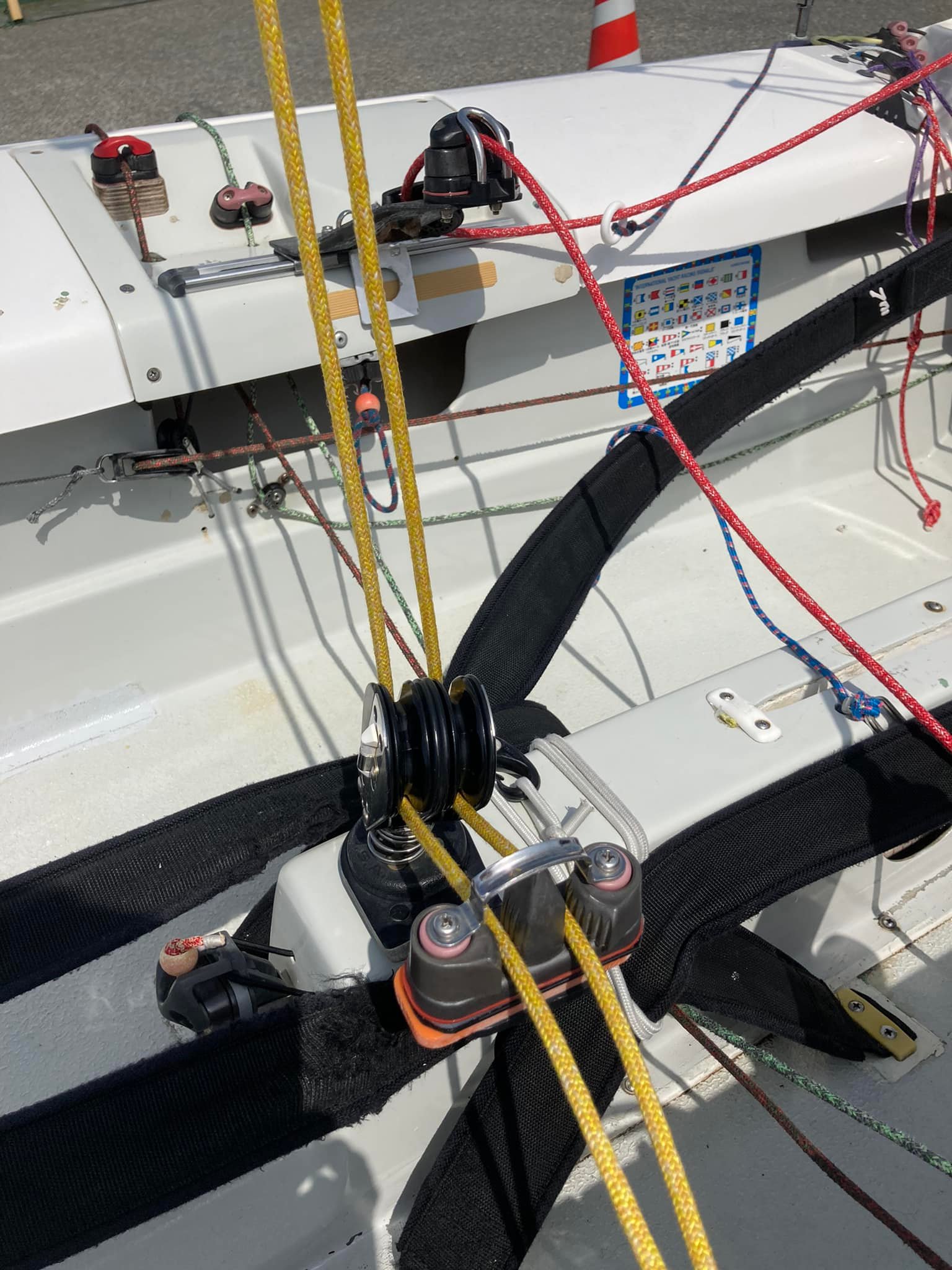
1 comment
Antonio Bari
Great article! Just to let everybody know what's going on, the Snipe Class approved the increase of the cloth weigth and the test of mainsails with longer battens, but no changes in the dimensions. Several sailmakers are now testing the new mains which will be legal beginning from Jan, 1st 2013. Older sails with the standard battens wil remain legal.
Leave a reply
Your email address will not be published. Your comment will be revised by the site if needed.